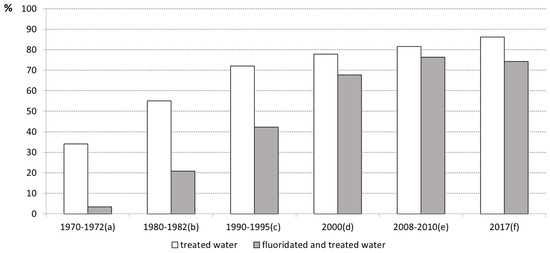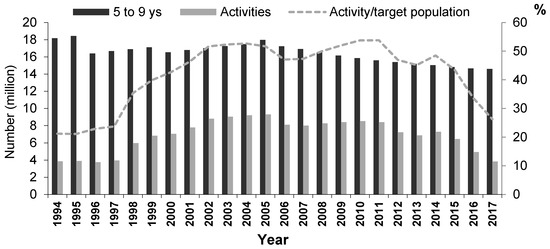Abstract
Untreated dental caries is the most common disease globally and fluoride use at the population level is crucial for its control. To investigate the economic and political conditions under which the trajectory of population-based fluoride use has occurred is key for a more comprehensive view on its current and future challenges. The objective was to give a brief history and summarize the information on the use of fluorides at the population level in Brazil from 1952 to 2017 and to point to current and future challenges. A critical overview was undertaken based on country-level analyses comprising political and economic conditions. The analytical approach adopted a set of premises applicable to the study of capitalist democracies. Fluoride methods of systemic and topic use began to be employed in Brazilian public health programs in the 1950s and in a combined way from 1974. Differences in political and economic contexts were highlighted for four periods: the first interventions from 1952 to 1974, when the fluoridated water law was approved; the expansion after 1974 until 1988, when a new constitution was enacted; the following time until 2010; and the final period. From the 1980s to 2008, water fluoridation coverage increased progressively, consolidating as a major strategy of systemic use in spite of inequalities among territories. Activities aimed to promote access to topical fluoride use increased and maintained stability until 2014, when they dropped sharply. Regulation of fluoride dentifrice’s quality remained insufficient. It was hypothesized that the strengthening of conservative liberalism and the increase in fiscal austerity observed in recent years might produce serious constraints on public investment and limit access to fluorides. To reduce inequities and promote benefits for all, including the most vulnerable groups, policies based on egalitarian and social justice theoretical perspectives are needed more than ever.
Figure 1

Figure 2

Excerpt:
… If the Brazilian history between 1964 and 2019 can be seen as a parabola in which the militaries with power to dictate the rules had to leave the scene to the redemocratization movement, and the economic and political crisis after 2014 saw a gap to colonize power, once again challenging progressive forces, which were trying to defend the democratic frameworks established by the 1988 Constitution pacts [93], the trajectory of topical fluoride use between 1988 and 2017 equivalent to an inverted parabola could to be associated with a growing curve of democratization that falls back under the rise of fiscal austerity supported by a center-right coalition.
A general hypothesis that emerges from this overview is that the strengthening of conservative liberalism and the increase in fiscal austerity observed in recent years might produce serious constraints on public investment and limit access to fluorides. To reduce inequities and promote benefits for all, including the most vulnerable groups, policies based on egalitarian and social justice theoretical perspectives are more needed than ever.
